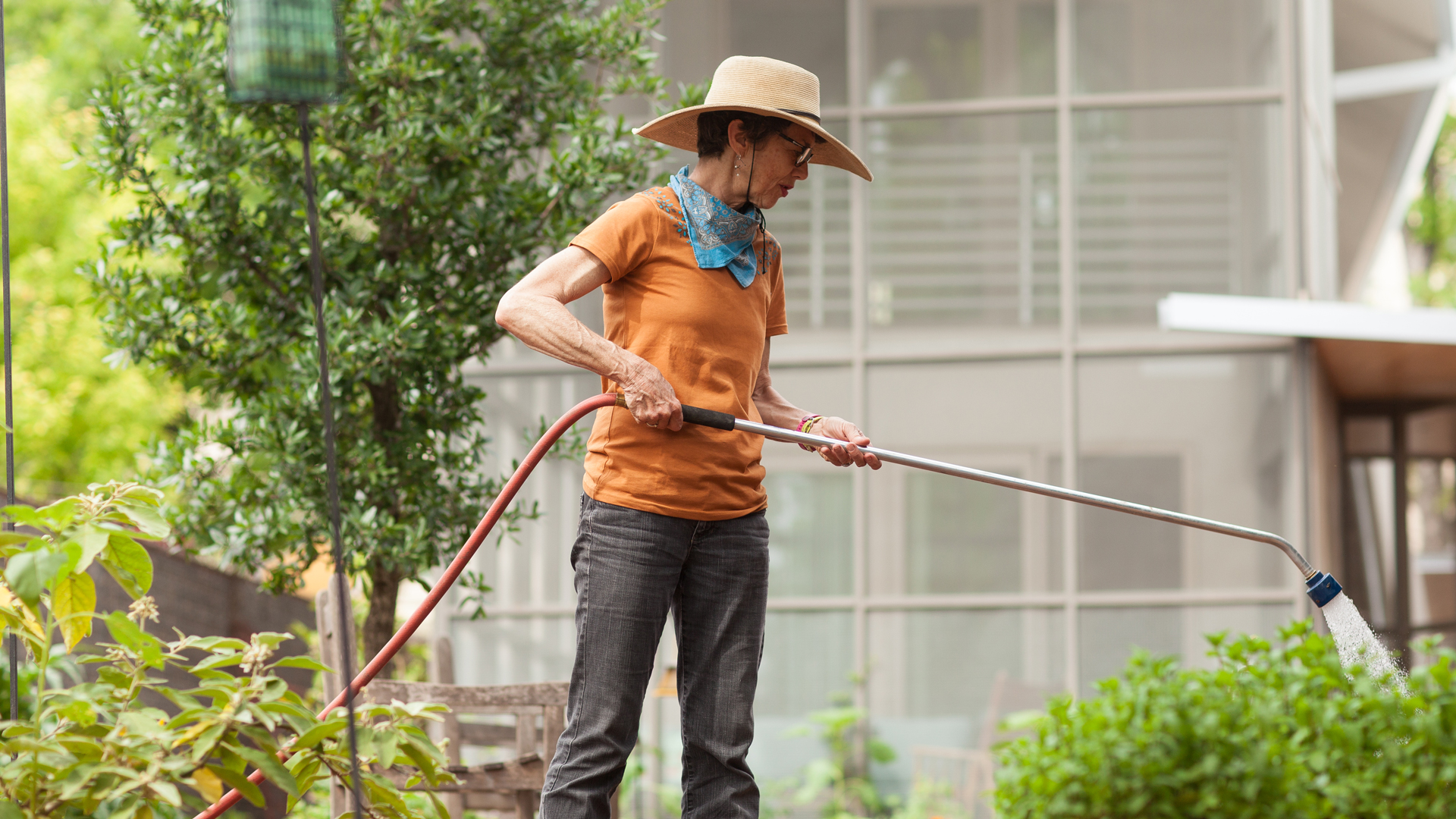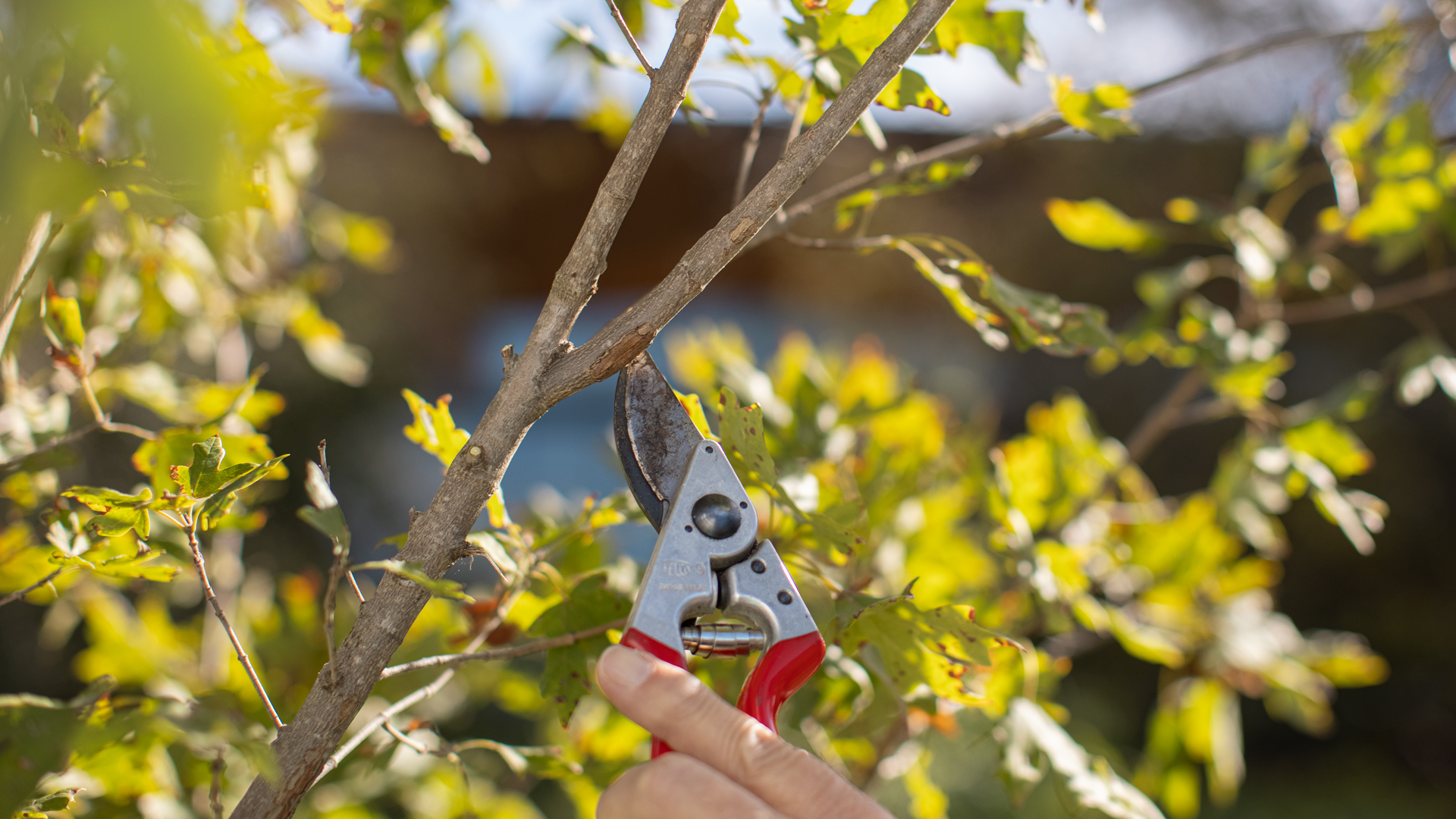One major advantage of a drought-tolerant yard in blazing temperatures is the low maintenance.
As the past few summers have taught us, a traditional American grass lawn landscape requires a lot of blood, sweat and tears in a typical Texas summer.
By contrast, if you have an established WaterSaver landscape, the summer months are relatively easygoing. There may not be much to do other than sipping tea, checking for stray breezes, watching hummingbirds buzz about and tipping your hat to passersby.
There’s still maintenance to carry out if you have the inclination, but none is urgent. After the first three years, established native and adapted plants don’t require a lot of fussing.
Remember, current conditions are exactly what your heat-hardy garden was built to handle so this is the time to enjoy seeing how it’s performing, and what you might want to change for next year.
If you’re not daunted by high temperatures, here are a few to-dos for your drought-proof landscape in July:
- Flagging and wilting plants may be everywhere for the next few weeks, especially at the end of the afternoon. For native and well-adapted plants, this is a coping mechanism: they have the ability to fold and curl up their leaves to minimize water loss from exposed surfaces. It’s the plants that are still flagging or drooping the next morning for days in a row that may be the ones to benefit from a visit by your garden hose.Remember, you’re not looking to bulk up plants or induce more growth right now, just to give the roots a drink if needed. This is especially important for recent plantings. When in doubt, continue to follow the 3-2-1 rule to establish new plants.

- Potted plants are always likely to dry out faster. If your potted herbs, basil and succulents are showing repeated signs of distress, try moving them into the shade. Afternoon shade is particularly beneficial for stressed potted plants.
- For pruning, follow the Hippocratic oath in high summer: above all, do no harm. This doesn’t mean no pruning at all, but just fit your efforts to the plant’s natural abilities and your own (with temperatures hovering around 100 degrees, you’re liable to lose patience in a hurry). It may be tempting to produce a “clean” look by cutting everything back, but a minimalist approach is better in summer. Take cues from the plants to avoid stressing them out. Spring wildflowers and herbaceous perennials, for instance, have long turned brown and are heavy with seeds; there’s not much on them left to preserve at this point so snip away. For perennials that are flagging and visibly struggling, removing up to 1/3 of the plant can provide a “haircut” after this spring’s overgrowth. Avoid excessive hedging. For trees and shrubs, prune only as needed.We’re not all horticulturists, so if you’re not certain, it’s ok to use a light touch and stick with the plants you already know well.

- Check the lawn, if you still have one. Your main goal for grass this time of year is just to keep the roots alive — not to keep it green.Take note of where grass is declining — that may be a good place to add water-saving plants (or shade trees) when autumn arrives. If it’s declining in shade, it may be getting too dark for grass. You may want to catch up on light tree pruning or add groundcover plants in that area next winter.
In either case, make sure you’ve raised your lawnmower blades to at least 3 inches for St. Augustine, and at least 2 inches for Bermuda.
- Manage mosquitos. If you’re lucky enough to still have water laying around in pans and saucers, make sure to empty them into your plants before the mosquitos hatch! The recent bumper crop of mosquitos may have yielded a bit, but they can also reproduce in yard debris — sticks, logs and leaves — so it’s not a bad idea to rake under or behind shrubs where heavy litter buildup can contribute to mosquitos.There’s not much you can plant that will drive away mosquitos, other than a circular fan. In the meantime, selectively prune to maximize breezes around your outdoor living areas.
Ultimately, the fruit of your labor in a WaterSaver garden is that you’re not having to spend your summer days worrying and watering. Just use a light touch on any maintenance tasks.
And while you’re at it, polish off your rain gauge and make sure it’s displayed prominently — hope springs eternal.




